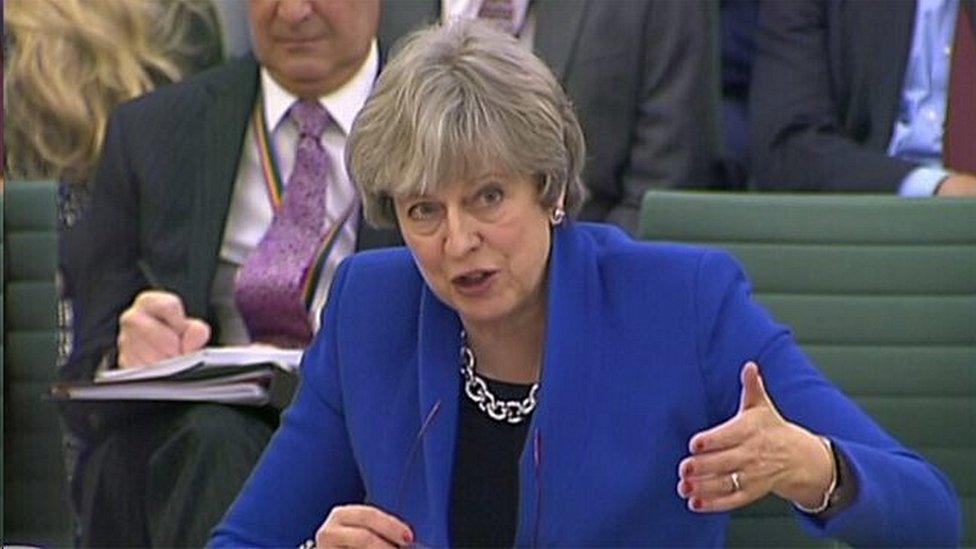More than one way to sack a government
- Published

Could the prime minister lose her job - but the Conservative party remain the party of government?
It's the Opposition's big gun - the way to demonstrate that a government has lost the confidence of the House of Commons, and with it, the right to govern.
A successful "no confidence" motion is a government-killer….and this was the means by which James Callaghan's minority Labour government was ushered from power in 1979, when it lost the support of the smaller parties (although it is less often remembered that it took several attempts, before it worked).
But things have changed since then - the late Con-Lib Dem coalition government rewrote this part of the constitution, when it passed the Fixed-Term Parliaments Act, external.
This set out the ground rules for removing a government and, separately, for triggering a general election ahead of schedule.
Shaping party tactics
At the time it was seen by some as a constitutional fix for a temporary coalition, but it remains in force and shapes party tactics in the current crisis. And now, a Commons committee is suggesting that the Act does not provide the only way of doing so - and that could be crucial in the weeks ahead.
Under FTPA, the Commons could remove a government by a simple majority, if it passed a motion in a specified form, and that would start the clock on a 14-day deadline for finding a successor government capable of commanding confidence (motions with different wording would not engage the act).
The prime minister would have to advise the Queen who might be best placed to head a new government, and they would then have to submit themselves to a confidence motion, to show that they could command a majority in the Commons.
If no new government emerged, the Queen would have to dissolve Parliament.
No election needed?
There's a separate process to get a two-thirds majority to hold an early election, so the big change is that the Act ends the ability of the prime minister to simply call an election at a moment of their choice, and decouples the removal of a government from the holding of an election.
This week, the Commons Public Administration and Constitutional Affairs Committee, external (PACAC) suggested that MPs would have other options. They argue that any Commons motion which withdrew the confidence of the House from a government should lead to its resignation, because without confidence it would have no right to govern, and in particular no right to levy taxes.
And this is no mere piece of hair-splitting. What it means is that it would - if the PACAC view holds - be possible to oust a government without triggering that 14-day deadline.
So there would be a longer interlude with a caretaker administration keeping the machinery of state ticking over, during which a new government might, or might not, be formed, perhaps with a couple of candidates and party combinations trying their luck.
The difference is that her Majesty would have to dissolve Parliament, so there would not be a rigid time limit. Of course, eventually it might become clear that no government could be formed - and then, perhaps FTPA might kick in, with a motion to dissolve Parliament.
It is not clear that the committee's analysis, though based on a painstaking inquiry with ministers and constitutional experts, redefines the constitutional position. But it might, and if it did, it could matter a great deal.
One of the regular features of the Brexit process has been the way apparent procedural small print like the Grieve Amendment or applicability of the Humble Address procedure has emerged to shape events - and this might provide another such occurrence.
At the moment a successful no confidence motion looks a fairly distant prospect; either the DUP would have to vote alongside Jeremy Corbyn to remove Theresa May, or (perhaps "and") a number of Conservative MPs would have to do so.
Either of these seems unlikely, but the new-look no confidence system does provide the DUP or Tory rebels with the potential excuse that they were voting to remove this prime minister, not the Conservative government.
It would be a fig-leaf, at least.